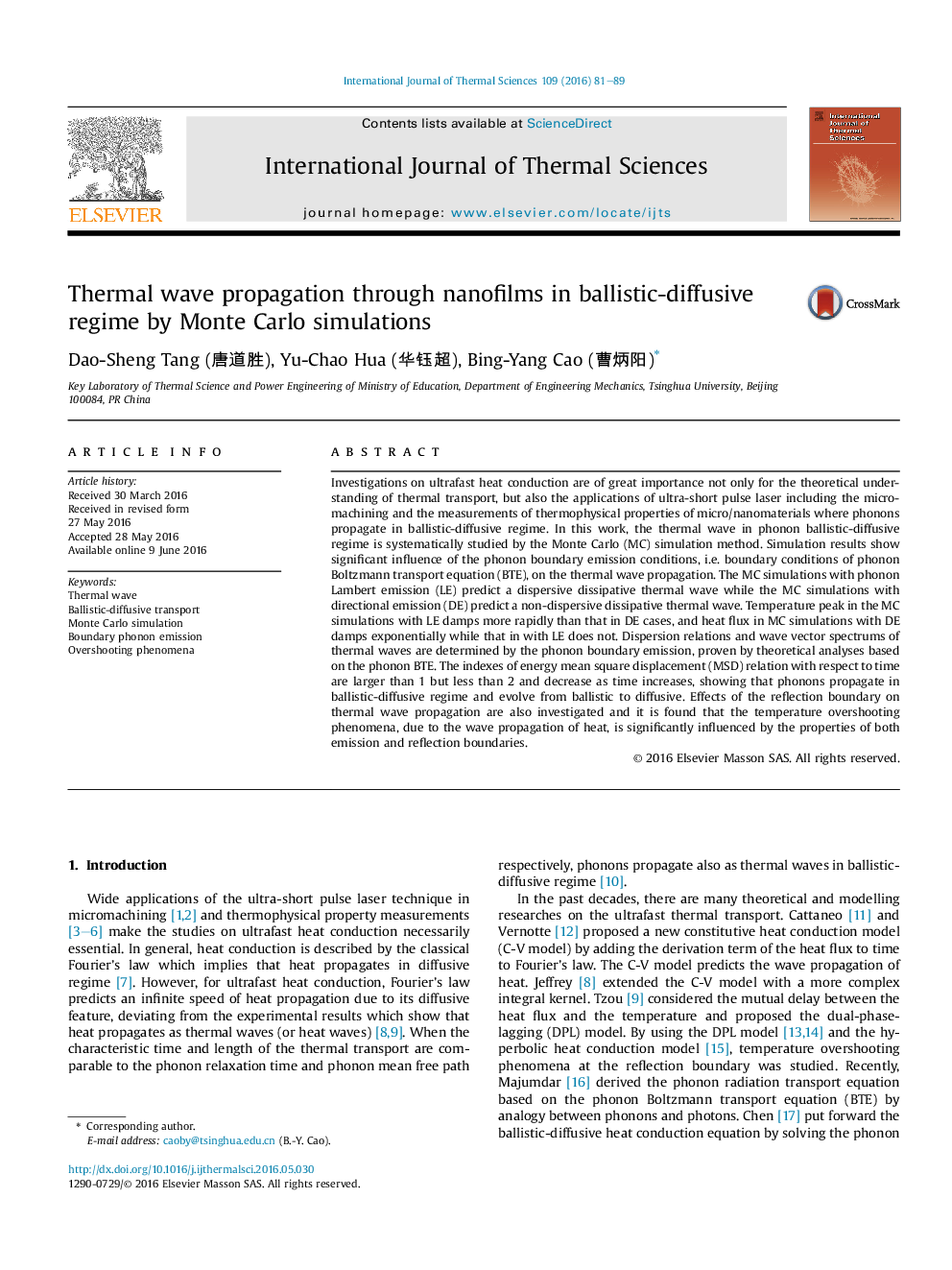| Article ID | Journal | Published Year | Pages | File Type |
|---|---|---|---|---|
| 668927 | International Journal of Thermal Sciences | 2016 | 9 Pages |
Abstract
Investigations on ultrafast heat conduction are of great importance not only for the theoretical understanding of thermal transport, but also the applications of ultra-short pulse laser including the micromachining and the measurements of thermophysical properties of micro/nanomaterials where phonons propagate in ballistic-diffusive regime. In this work, the thermal wave in phonon ballistic-diffusive regime is systematically studied by the Monte Carlo (MC) simulation method. Simulation results show significant influence of the phonon boundary emission conditions, i.e. boundary conditions of phonon Boltzmann transport equation (BTE), on the thermal wave propagation. The MC simulations with phonon Lambert emission (LE) predict a dispersive dissipative thermal wave while the MC simulations with directional emission (DE) predict a non-dispersive dissipative thermal wave. Temperature peak in the MC simulations with LE damps more rapidly than that in DE cases, and heat flux in MC simulations with DE damps exponentially while that in with LE does not. Dispersion relations and wave vector spectrums of thermal waves are determined by the phonon boundary emission, proven by theoretical analyses based on the phonon BTE. The indexes of energy mean square displacement (MSD) relation with respect to time are larger than 1 but less than 2 and decrease as time increases, showing that phonons propagate in ballistic-diffusive regime and evolve from ballistic to diffusive. Effects of the reflection boundary on thermal wave propagation are also investigated and it is found that the temperature overshooting phenomena, due to the wave propagation of heat, is significantly influenced by the properties of both emission and reflection boundaries.
Keywords
Related Topics
Physical Sciences and Engineering
Chemical Engineering
Fluid Flow and Transfer Processes
Authors
Dao-Sheng (åéè), Yu-Chao (åé°è¶
), Bing-Yang (æ¹ç³é³),
